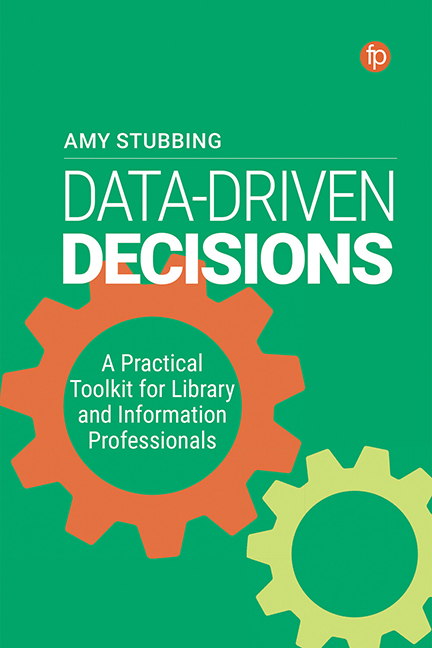14 - Back to the Drawing Board: How Data Visualisation Techniques Informed Service Delivery during the COVID-19 Pandemic
Published online by Cambridge University Press: 04 August 2022
Summary
Setting the scene
Liverpool John Moores University (LJMU) is a vibrant institution in a thriving city. It was created in 1992 from Liverpool Polytechnic and built on the foundations of various educational establishments dating back to 1823. It has a real heart for supporting its students, many of whom come from non-traditional backgrounds.
I have worked at LJMU for 14 years, over 10 of which in the Library Services. My current role is Team Leader for the Business Administration Team, which covers lots of different things – data is certainly a large part, but definitely not all I do. I also have responsibility for monitoring finance, administration, health and safety, compliance with General Data Protection Regulations (GDPR) and anything else that comes along! In an organisation like ours, we need to be able to turn our hands to most things as we only have a small team of staff compared with some other institutions. This actually has pros and cons – although we don't always have the staff capacity to deliver everything we’d like to, we have lots of opportunities to gain new experiences and develop new skills, and our management are always very supportive of staff who want to try new initiatives.
As a result, I’ve been actively encouraged to develop my own skills and experience with respect to data analysis. I have a maths background, but most of what I know about using data I’ve learned on the job and picked up as I’ve gone along. I now co-ordinate most data analyses for Library Services, the importance of which has greatly increased in the last few years as they are used to inform senior managers for operational and strategic decisions.
One of the biggest successes that we’ve had in getting more understanding and richer insights from our data has been in employing data visualisation. This case study will outline this journey, the highs and lows and why we believe it is such a valuable approach, especially during the pandemic.
Background
Over the last ten years in the post, I have spent a lot of time improving our data collections and analysis methods. My initial developments concentrated on our data collection methods and really getting to understand our data, its strength and limitations.
- Type
- Chapter
- Information
- Data-Driven DecisionsA Practical Toolkit for Librarians and Information Professionals, pp. 155 - 168Publisher: FacetPrint publication year: 2022



